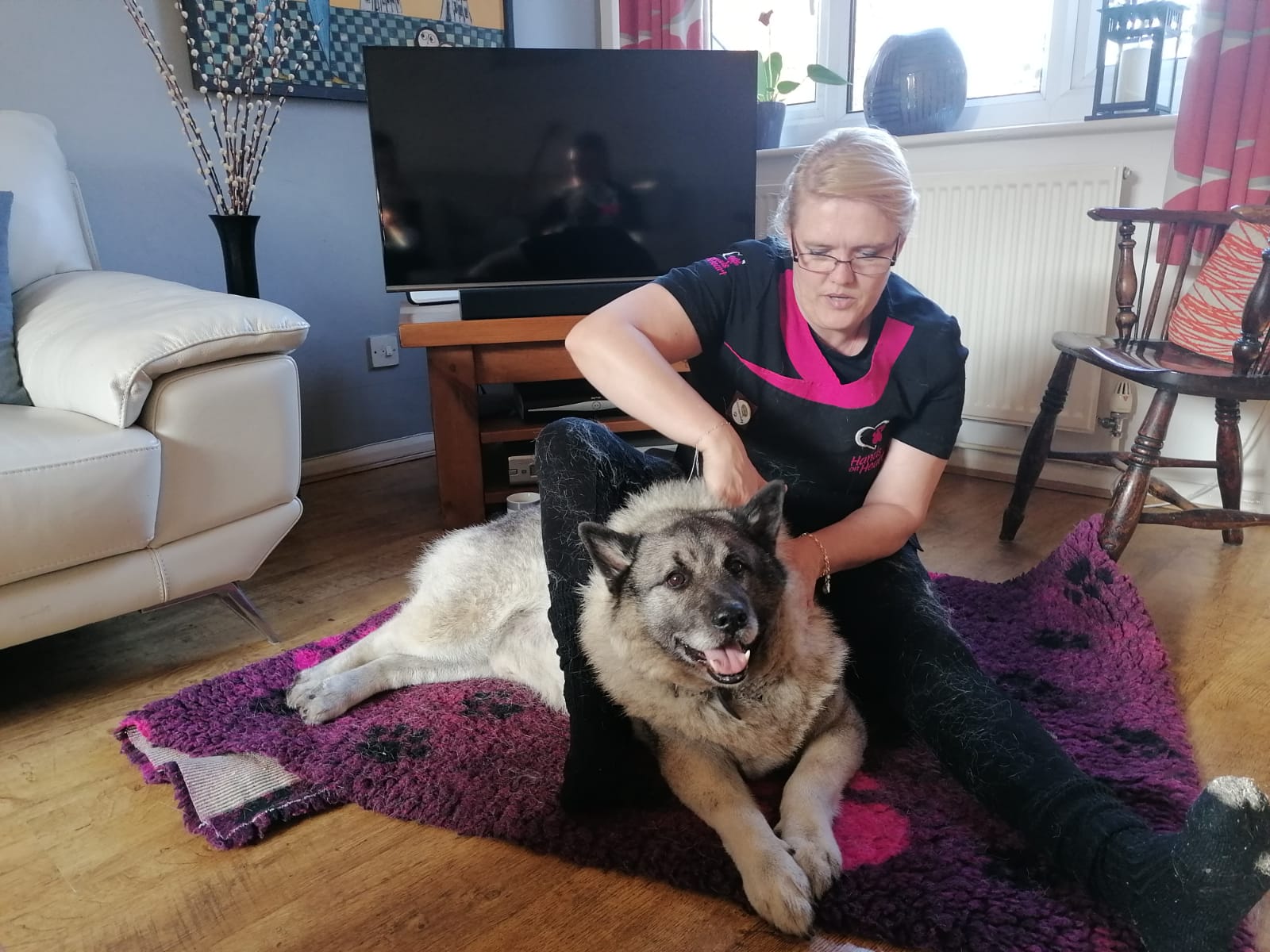Have you ever wondered what effects these “cold snaps” have on your dog’s body? Or even your own?
I always used to think December was the heart of “Winter” as a kid but i seem to have chosen to forget about January and February even though i grew up with snow drifts as tall as me that i used to walk on top of to school and back.
And I don’t know whether it’s my age but i am REALLY feeling the cold this year… right to my bones! How about you?
Physiological symptoms of Cold Weather – in you AND your dog:
- Cold tends to cause “vasoconstriction” (constricted blood vessels) in limbs, hands, feet and paws because the body’s first response is to direct the warm blood to the core of your body where the important organs are housed. This is why you may have persistently cold and stiff hands and feet, no matter how much you warm your extremities. It’s the same for your dog which is why they too seek warmth.
- When you feel cold, to the point of shivering, you tense up physically. I have often found my shoulders are hunched and up by neck (also a reaction to stress) because it is another way the body protects itself and tries to lower the surface area of the body that is open to the cold. Have you noticed that when you can eventually relax then you warm up a lot quicker?
- Fascia, the layer of connective tissue that surrounds your muscles and contains a multitude of nerve endings, can become constricted in the cold too, causing stiff joints and decreased flexibility as well as pain all over, especially when touched (similar to fibromyalgia), also known as wide-ranging myofascial pain which can actually linger long after you get back to a warm place.
- Arthritis and other degenerative orthopaedic conditions can produce similar responses to above because of the hypersensitivity of the nerves but also because of the lack of warm blood to the joints and surrounding muscles too. Again, this can happen with humans and dogs.
- Previously-broken bones and teeth can be particularly painful in the cold, or in places where cracks or degeneration may have occurred and not completely healed. This is because the nociceptors responsible for temperature sensitivity can be activated when it’s cold which cause a pain response signalling we’ve “hit a raw nerve”. This pain can decrease appetite in humans and dogs.
- Cold viruses love temperatures of 25ºC, whereas flu viruses love 37ºC, (which is why our bodies produce a fever during the latter to get rid of influenza and not rhinovirus)… but also why there is a bigger risk of these viruses travelling deeper into our lungs to seek these temperatures if we don’t wrap up warm.
- Dogs are also susceptible to cold-type viruses and as their sense of smell is often their primary sense, this then downplays their taste response. This means that some dogs may go off their food for a while… because if it doesn’t smell like normal, then there is no point eating it.
Dogs Bred for Cold Weather
There are breeds such as Huskies, Newfoundlands and Leonbergers that are bred with Thick, Double Coats to withstand ridiculously cold temperatures as they historically have jobs such as driving sleds, pulling carts or being search dogs in subzero temperatures. I always found it interesting that these breeds can use these layers of fur to trap in warm air but also cool air to regulate both extremes of temperature (thermoregulation). So their multiple coats of fur aren’t JUST for snuggling into!
But if you don’t have one of these wonderfully hardy breeds during this February cold snap (or any cold snap throughout the year, especially here in the UK where the weather can be anyone’s guess) then you may need to think about:
Tips for Outdoors
- Think about going for a shorter dog walk, maybe less distance but more often if you both like to keep active. If you have an active dog, think about adding some enrichment toys to your dog’s day to keep their mind occupied.
- adding a protective “paw balm” on your dog’s feet to protect against frostbite. This also helps prevent any irritant reaction from salt or other antifreeze that has been placed on the ground… it’s always recommended to wash your dog’s paws when you return… especially if they are prone to biting their paws anyway.
- Invest in a dog coat if you have a dog who particularly feels the cold… there are many different brands available online or in your local pet store but i particularly favour the bespoke ones that my friend makes out of recycled human clothes (DOBBY’s coats)
Tips for Indoors
- If you are adding more layers to yourself indoors to save on heating bills during this “energy crisis”, think about your dog also. Think of a dog blanket or an old quilt… or snuggling under the same blanket together can actualy be better than all the above because you get hugs as well as conserving body heat.
- Dog “pyjamas” are also available, a softer version of a dog coat which can be particularly be good if you have an elderly dog with arthritic symptoms or your house is draughty in places. One of my greyhound clients refuses to take his off whenever its even slightly chilly (also made by Dobby’s Coats).
- Ensure your dog’s bed offers enough comfort from the cold floor and is out of a draught. Try sitting on the floor (or even in your dog’s bed) to test whether a draught is coming underneath the sofa or under the closed door. It’s amazing how much this small difference can increase your dogs mobility.
Hopefully these tips would help you prevent any pain in both yourself and your dog, but if you need further help at getting rid of cold-onset aches and pains then I am available in New Brighton, Wallasey to help you and your dog with my massages.
How Massage Can Help You and Your Dog during Times of Cold Weather
- Long, flowing Effleurage movements bring your warm blood supply to areas that often feel cold like arms, hands, legs and feet. However, the neck is often exposed too when we don’t wear the right clothing (i remember my osteopath recommending a “PROPER” scarf and jumper many years ago because that was why i constantly had a cricked neck!)
- Massage can bring fresh blood supply and therefore warmth and nutrients to specific muscles that may not have been working properly due to the build up of toxins (think “a stitch” when running… thats the pain that a build of toxins in your muscles can bring), enabling them to work better.
- When specific muscles and areas of fascia are targeted with intuitive massage techniques, they increase in elasticity, flexibility and suppleness, which in turn would reduce any myofascial pain you or your dog may be feeling. AND this also means it is not as hard to get up from a sitting position (that is becoming increasingly frequent with me of late… accompanied by groans of hardship too!) so you are more likely to be able to move with ease and burn some calories to keep yourself warm too.
- BONUS: Since working with Shamanic Energies and Reiki as part of my massages, my human clients have often commented on my “magic microwave hands” that just help them feel warmer, especially when working on hands, feet and areas that have been feeling particularly cold due to poor circulation as well as cold weather.
So please, try any or all of the above to see if you can reduce the effect of cold weather and see which is your favourite. If you want to discuss any of the above then let me know via your choice of contact (or pop along to our new treatment room, 116a Rake Lane, Wallasey, for a brew and a chat)
i may work with dogs but i don’t bite 🙂




0 Comments